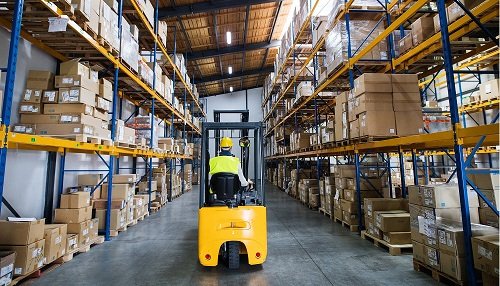Have you ever been overwhelmed with inventory management in a temporary warehouse setup? Temporary warehouses require strategic planning to ensure inventory flows smoothly without unnecessary costs. In this article, we’ll explore practical tips for managing your inventory effectively, saving time and money. These strategies will help ensure your temporary warehouse remains productive if you’re looking to streamline operations and reduce costs.
Effective Strategies for Managing Inventory
Invest in Equipment rental Services
Having the right equipment is crucial when managing a temporary warehouse. One effective way to do this is to access equipment for hire services, which provide the tools you need without large upfront costs. Renting forklifts, pallet jacks, and other necessary equipment can help you manage heavy lifting and stock movement more efficiently. The benefit of hiring equipment is the flexibility it provides. You can adjust your operations based on current needs without being locked into long-term commitments.
Optimise Space Utilisation
Maximising the available space is key in a temporary warehouse setting. Every square metre should serve a purpose. Stackable storage options and vertical shelving can create more room for inventory without additional floor space. A clear layout will help you maximise your place and ensure smooth operations. It’s important to review how you’re using the space regularly. Sometimes, rearranging storage units or adjusting pathways can improve efficiency.
Implement Inventory Management Software
Digital inventory systems are a game changer for warehouses. Implementing software lets you track stock levels in real time, manage reorders, and avoid overstocking or understocking. This technology saves time by automating tasks and prevents costly errors like miscounts or stock-outs. Integrating inventory software into your temporary warehouse allows you to streamline operations from day one.
Organise Items for Easy Access
A well-organised warehouse can dramatically reduce the time spent searching for items. Categorise your inventory based on usage frequency or size and ensure that fast-moving products are easy to reach. Labelling shelves and storage areas clearly will also prevent confusion and delays. Organisation is even more important in a temporary warehouse.
Train Your Staff Properly
Your staff plays a vital role in managing inventory efficiently. Providing them with the right training ensures they know how to use equipment, follow procedures, and navigate the warehouse safely. Proper training also reduces the risk of errors, saving time and money in the long term. Staff should also be familiar with any software you’re using. You’ll have a much smoother operation if they understand how to input data correctly and generate reports.
Streamline Receiving and Shipping Processes
One area where time and money are often wasted is the receiving and shipping process. In a temporary warehouse, streamlining these operations is crucial to avoid bottlenecks. A dedicated area for receiving and shipping will help keep operations flowing smoothly. Make sure to inspect incoming goods immediately and record them in the system. This prevents delays and ensures that stock is available for use as soon as possible.
Regularly Review Stock Levels
Managing inventory efficiently means regularly reviewing stock levels to prevent shortages or overstock. Too much stock can lead to unnecessary storage costs, while too little can disrupt operations. Temporary warehouses, in particular, should keep stock levels closely monitored to prevent any mishaps. Inventory management software can assist with this process, but it’s also important to conduct regular physical checks.
Keep a Backup Plan in Place
When working with a temporary warehouse, preparing for the unexpected is important. Delays in receiving stock, equipment malfunctions, or unexpected surges in demand can throw off your management. A backup plan can save time and money by keeping things on track. Planning for potential issues will ensure you avoid unnecessary costs and maintain efficiency.
Managing inventory in a temporary warehouse requires a strategic approach. When you access equipment for hire services, they provide the flexibility and efficiency needed to easily manage stock. You can save time and money by optimising space, using management software, and organising items effectively.







